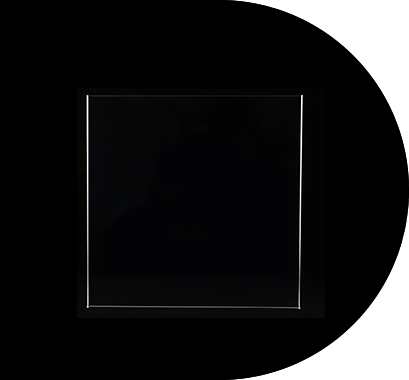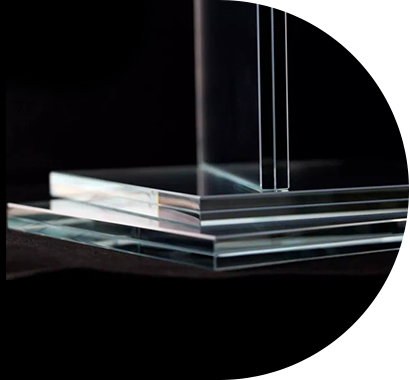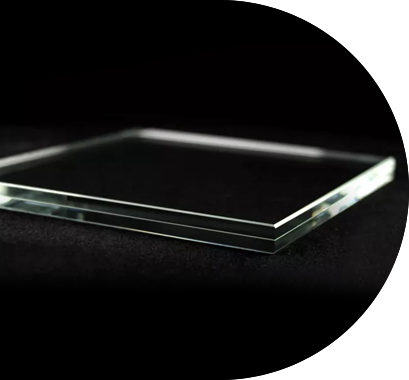Alacsony fényvisszaverő laminált üveg combines two key technologies—anti-reflective coatings and laminated safety construction—into one advanced glazing product that offers both visual and structural advantages. Előnyei kiterjednek a különféle területeken, beleértve az építészetet, a szállítást, a fogyasztói elektronikát, a múzeumot és a kiskereskedelmi kijelzőket és egyebeket. By significantly reducing surface reflections while retaining strength and safety features, low reflective laminated glass meets both aesthetic and functional demands in modern applications.
In architectural applications, one of the primary advantages of low reflective laminated glass is its ability to minimize glare and enhance transparency in building façades, curtain walls, and observation decks. A hagyományos üvegfelületek a látható fény körülbelül 8% -át tükrözik, ami nem kívánt tükörhatásokat és vizuális kellemetlenséget okozhat. Low reflective laminated glass reduces reflectance to as little as 1% or less, improving visibility through the glass and contributing to a more open, seamless design aesthetic. In high-rise structures, where reflections can become a hazard for birds and a nuisance for neighboring buildings, this optical clarity plays a critical role in urban planning and sustainable architecture.
A laminált szerkezet biztonságos réteget ad az épületekhez és az üveg telepítéséhez. If broken, the interlayer—typically polyvinyl butyral (PVB) or ionoplast (SGP)—holds the fragments together, preventing dangerous shards from scattering. This makes low reflective laminated glass ideal for overhead glazing, glass canopies, balustrades, and other locations where safety is a concern. Additionally, the interlayer provides enhanced sound insulation, which is valuable in urban environments where acoustic control is a design priority.
In museums, galleries, and retail environments, low reflective laminated glass provides both optical clarity and artifact protection. Display cases and storefront windows benefit from the glass's reduced glare, which allows viewers to observe fine details without interference from ambient light reflections. This feature is especially important in settings where lighting is carefully controlled for presentation and preservation purposes. At the same time, the laminated construction blocks over 99% of UV radiation, helping to preserve artworks, historical documents, and merchandise from fading or degradation caused by prolonged exposure to sunlight.
In transportation, particularly in vehicles such as trains, buses, and aircraft, low reflective laminated glass enhances passenger comfort by providing clear exterior views while reducing interior reflections and glare. Ezenkívül hozzájárul a biztonsághoz azáltal, hogy növeli az ütközés ellenállását, és csökkenti a sérülés valószínűségét törés esetén. A sofőr és a pilóta kabinokban az alacsony fényvisszaverő üvegezéssel történő jobb láthatóság javítja az operatív biztonságot és csökkenti a szemtörést.
The consumer electronics industry also benefits from the use of low reflective laminated glass in products such as smartphones, tablets, monitors, and television screens. By applying anti-reflective coatings to laminated glass substrates, manufacturers can produce display surfaces that remain visible even under bright lighting conditions, such as sunlight or strong indoor illumination. A laminált szempont jobb tartósságot és ütésállóságot kínál, védve az érzékeny kijelző alkotóelemeit a sérülésektől.

In hospitality and healthcare facilities, low reflective laminated glass improves patient and guest experiences by reducing visual distractions caused by reflections in partition walls, windows, and observation panels. The acoustic dampening properties also contribute to quieter indoor environments, which are essential in hospitals, clinics, and wellness centers. Furthermore, laminated glass with integrated privacy layers or smart glass technology can enhance functionality without compromising clarity or safety.
Another growing field of application is high-end interior design, where designers use low reflective laminated glass for doors, partitions, furniture, and decorative panels. Its clarity enhances lighting schemes and color accuracy in interiors while its safety and sound insulation properties add functional value to open-plan spaces and glass-heavy environments.
Az alacsony, fényvisszaverő laminált üveg átfogó előnyei több területen:
Építészet: fokozott átláthatóság, biztonság, akusztikus teljesítmény és energiahatékonyság
Múzeumok/kiskereskedelem: tükrözés csökkentése, UV -védelem, tárgyak és termékek láthatósága
Szállítás: Javított láthatóság, biztonság és az utasok kényelme
Fogyasztói elektronika: Jobb képernyő -olvashatóság, karcállóság és szerkezeti védelem
Healthcare/Hospitality: Reduced glare, better sound insulation, and patient comfort
Interior design: Sleek aesthetics, functional safety, and light transmission control
By combining advanced optical performance with reliable mechanical integrity, low reflective laminated glass supports modern engineering and design goals, making it a preferred material for demanding and high-performance applications.





